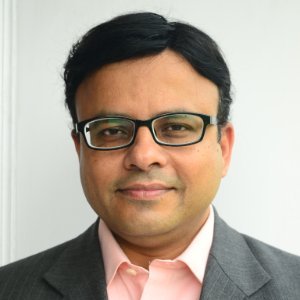 Wealth management, one of the most appealing facets in the financial sector, is undergoing a fundamental transition in European countries. This is due to the emergence of a new generation of investors whose preferences are greatly influenced and shaped by new trends and technologies. In fact, banks have redrawn their potential customers’ profile and are now focusing on prospective investors who have accumulated their wealth gradually. While continuing their traditional focus on UHNWIs and HNWIs, some banks have also included all individuals who have a potential to save money, famously referred as ‘middle-class millionaires’, in their purview.
Wealth management, one of the most appealing facets in the financial sector, is undergoing a fundamental transition in European countries. This is due to the emergence of a new generation of investors whose preferences are greatly influenced and shaped by new trends and technologies. In fact, banks have redrawn their potential customers’ profile and are now focusing on prospective investors who have accumulated their wealth gradually. While continuing their traditional focus on UHNWIs and HNWIs, some banks have also included all individuals who have a potential to save money, famously referred as ‘middle-class millionaires’, in their purview.
According to data disclosed by the Federal Agency for Civic Education (Bundeszentrale für politische Bildung), 21.4% of the German population belonged to the low-income group, 60.1% to the middle-income group and 18.4% to the high-income group. This data is based on a study about the relative income of the German population carried out by the German Institute for Economic Research (DIW Berlin) in 2011.
Classification of relative income
| Low income | Less than 70% of median income |
| Middle income | Between 70% - 150% of median income |
| High income | More than 150% of median income |
While 40% of households had no savings potential at all, the remaining 60% of households did have a potential to save money, albeit in varying degrees. This unequal distribution of income in Germany affected the savings potential of the German population. Here is a diversified view of the varying degrees of savings potential of the middle class in 2011 accordingly to the Federal Agency for Civic Education (Bundeszentrale für politische Bildung).
| Households | Share of savings from monthly income of households in Germany (in %) | ||||
|---|---|---|---|---|---|
| No savings | Under 5% | 5% - 10% | 10% - 20% | 20% and above | |
| Households (%age) | 40% | 11% | 17% | 20% | 12% |
The multi-layered middle classi
Looking ahead to 2018, the financial assets of individuals in Europe are forecasted to reach EUR 23 trillion, with HNWIs and UHNWIs accounting for EUR 9 trillion. With UHNW and HNW assets growing at nearly 6% per annum, the wealth management industry is expected to continue outpacing growth in the region’s nominal GDP and the assets held by affluent/retail clients. ii Thus, in terms of surplus money available to households in Germany, the multi-layered middle class will seek opportunities to invest on the basis of their income and savings potential. With wealth management becoming more inclusive and broad-based, banks have started experiencing an increase in their customer base, and proportionately an increase in the asset base under their supervision. While UHNWIs and HNWIs continue to remain their focus due to the availability of surplus income, the middle class is now equally important.
Following are some notable trends seen in recent times:
-
1. Consumers are more informed now than ever about alternative sources of wealth creation thanks to the Internet and effective digital and social media marketing strategies that allow banks to reach out to every potential customer.
-
2. Banks have realized the importance of educating the consumer, especially the middle class and the younger generation of investors about wealth management. To address a potential investor's questions, banks have made their websites responsive and content rich. They have intelligently combined content with visuals and graphics to improve the user experience and guide visitors throughout the website. Through this process of guided navigation, banks are able to educate the visitors about wealth management and answer their questions, making them more equipped and knowledgeable than before and converting their queries into investments. These customers in turn, function as ambassadors and spread the message of wealth management by word of mouth indirectly among their peers, friends, and family.
-
3. There is a greater tendency among the middle class to make investments as people are more educated about wealth management. Potential investors consult their financial advisor or specialist on a regular basis to decide whether to invest in equity or debt, in government and treasury bonds or in private sector funds.
-
4. Globally, new earners constitute a significant chunk of the customer base. These are investors who are young and have only recently started to earn money. Even after meeting their regular expenses and buying luxuries, they are left with surplus funds that they don't know how to utilize. Although quite tech savvy and knowledgeable about things happening around them, new earners are quite ignorant about investment matters and often seek guidance on how to maximize their wealth with minimum risk.
-
5. Banks have created multiple schemes for investment so that they are able to reach out to all segments. For example, there are flexible investment schemes for homemakers. As homemakers don’t have a fixed amount of surplus fund available for investment at the end of each month, they can invest variable amounts in multiple schemes that are available either in the private sector or in government schemes. A choice of a particular scheme is done after doing a careful assessment of an investor’s profile, short and long-term earning objectives and risk-taking capacity. Based on this information the investor is advised of the various options through a process of consulting.
All the above data holds significance for banks dealing in wealth management, because wealth management, hitherto a reserve only for the wealthy, is now popular with the middle class. Anyone with surplus income is an eligible investor, be it a student, a homemaker, a salaried person, a self- employed professional or an entrepreneur. The underlying criteria is a strong desire to increase wealth and availability of surplus funds for investment. Thus, the goal of every bank today is to educate an individual, make them an informed potential investor and eventually a loyal customer.





